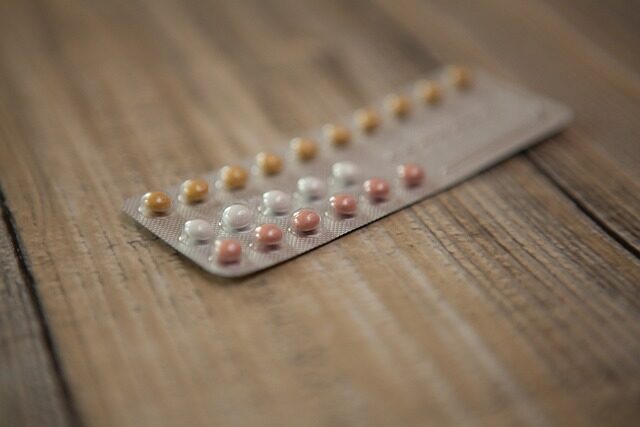Discover Your Peak Fertility Days with the Ovulation Calculator & Calendar

Understanding the nuances of reproductive health can be empowering for those trying to conceive. An Ovulation Calculator & Calendar can be a powerful tool in this journey, providing valuable insights into one's fertility window and the best time to try for a baby.
With technological advancements, tracking your menstrual cycle and predicting ovulation has become more accessible, helping countless women optimize their chances of becoming pregnant. Let's explore how these tools work and the signs to look out for during your cycle.
- How can an ovulation calculator help you predict your fertile window?
- What are the signs of ovulation?
- When is the best time to try to get pregnant?
- How do you track your fertile days using an ovulation calendar?
- What factors influence ovulation timing?
- How accurate are ovulation calculators?
- What should you do to improve your chances of conception?
- Related Questions on Ovulation and Fertility
How can an ovulation calculator help you predict your fertile window?
An ovulation calculator predicts your fertile window by using the start date of your last period and the average length of your menstrual cycle. By inputting this information, it estimates the days you're most likely to ovulate. This period, referred to as the fertility window, is crucial for couples trying to conceive.
The calculator works on the principle that ovulation typically occurs about midway through the menstrual cycle. However, as individual cycles can vary, the tool also considers the length of your cycle to provide a personalized prediction. This approach helps you understand the best timing for conception.
Planning intercourse during the fertility window increases the likelihood of sperm meeting the egg. By identifying these peak days, the ovulation calculator empowers you with the knowledge to enhance your chances of conception.
What are the signs of ovulation?
Recognizing ovulation signs is key to understanding your fertility. The most common ovulation symptoms include:
- A change in cervical mucus, which becomes clear and stretchy, resembling egg whites.
- A slight rise in basal body temperature following ovulation, detectable with a special thermometer.
- Mild cramps or twinges on one side of the abdomen, known as mittelschmerz.
- Increased libido and changes in the cervix's position and firmness.
Tracking these symptoms alongside using an ovulation calculator can provide a comprehensive understanding of your most fertile days.

When is the best time to try to get pregnant?
The ideal time to try for a baby is during the fertile window, which spans the day of ovulation and the five days preceding it. Interestingly, the likelihood of conception is highest during the last three days of this period. Engaging in regular intercourse during these days maximizes your chances of pregnancy.
Since sperm can live inside the female reproductive tract for up to five days, having sex before ovulation can also result in conception once the egg is released. Therefore, timing intercourse with the fertile window is crucial for those aiming to conceive.
How do you track your fertile days using an ovulation calendar?
Tracking your fertile days using an ovulation calendar involves marking the start date of your period each month. You then count the days until your next period begins to determine the length of your menstrual cycle. With this data, the calendar predicts ovulation 14 days before your next cycle is due to start.
Through consistent tracking, patterns in your cycle will emerge, allowing for more accurate predictions of your fertile days. While the calculator offers estimates, it's also worth monitoring physical signs of ovulation for additional precision.
What factors influence ovulation timing?
Ovulation timing can be influenced by various factors, including:
- Irregular menstrual cycles, which can make predicting ovulation more challenging.
- Lifestyle factors such as stress, diet, and exercise can affect hormonal balance and ovulation.
- Medical conditions like polycystic ovary syndrome (PCOS) or thyroid disorders can disrupt regular ovulation.
- Medications, especially those affecting hormones, may impact menstrual cycles and ovulation.
Being aware of these factors and working with a healthcare provider can help manage any issues that might affect ovulation and fertility.
How accurate are ovulation calculators?
Ovulation calculators are generally accurate for women with regular menstrual cycles. However, they rely on the assumption of ovulation occurring 14 days before the start of the next period, which may not hold true for all. For those with irregular cycles, predictions might be less precise.

It's important to combine the use of calculators with awareness of bodily changes linked to ovulation for the best chance of accurately identifying your fertile window.
What should you do to improve your chances of conception?
To improve your chances of conception, consider the following:
- Track your cycle with an Ovulation Calculator & Calendar and note ovulation symptoms.
- Maintain a healthy lifestyle, including a balanced diet and regular exercise.
- Begin taking prenatal vitamins to ensure your body has all the necessary nutrients.
- Manage stress through relaxation techniques like yoga or meditation.
- Seek medical advice to address any pre-existing conditions that could affect fertility.
By taking proactive steps and utilizing available tools like ovulation calculators, you can significantly enhance your odds of becoming pregnant.
How do I calculate when I ovulated?
To calculate when you ovulated, count back 14 days from the expected start of your next period if you have a regular cycle. For those with irregular cycles, tracking physical signs of ovulation or using an ovulation predictor kit can be more effective.
Ovulation predictor kits measure luteinizing hormone (LH) levels in your urine. A surge in LH indicates that ovulation is likely to occur within 24 to 36 hours, giving you a more specific timeframe for when you ovulated.
How many days after your period are you fertile and ovulation?
Typically, you are fertile in the five days leading up to and including the day of ovulation. This fertile window can start as early as day 11 of your cycle and last until day 21, depending on the length of your cycle.
For the most accurate estimation of your fertile window, use an ovulation calculator and track fertility signs like cervical mucus and basal body temperature.

How many days since your period do you ovulate?
Ovulation commonly occurs about 14 days before your next period starts, not after your period. The exact timing can vary depending on the total length of your menstrual cycle. If you have a 28-day cycle, you may ovulate around day 14. However, if your cycle is longer or shorter, ovulation day may also shift accordingly.
What is the most accurate ovulation calculator?
The most accurate ovulation calculator is one that takes into account the specific details of your menstrual cycle, such as cycle length and variability. It should also allow for the tracking of physical ovulation symptoms, enhancing its prediction accuracy.
Apps and websites that offer personalized tracking and use algorithms based on data from a large number of cycles tend to be more reliable than simple date-based calculators.

Leave a Reply